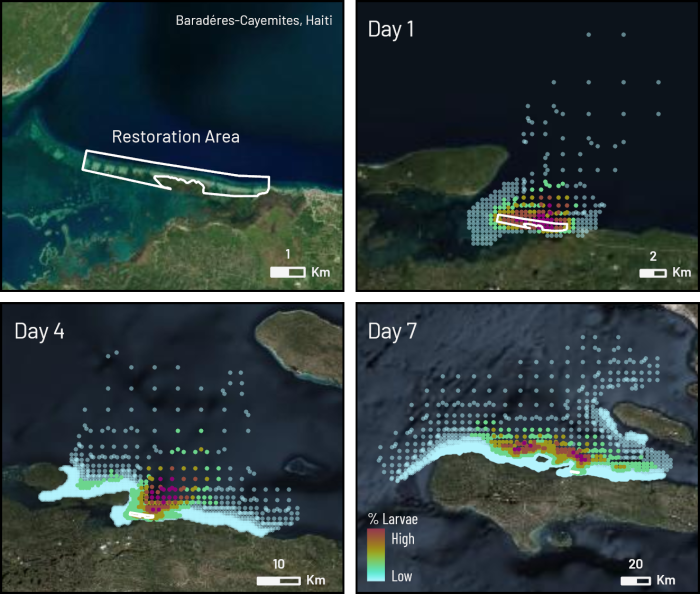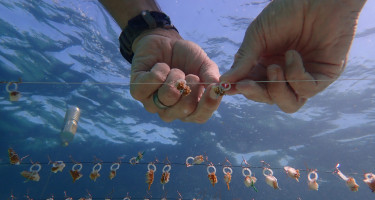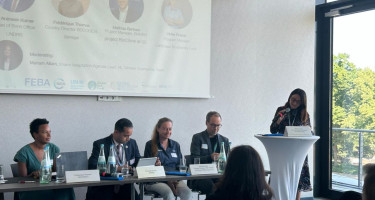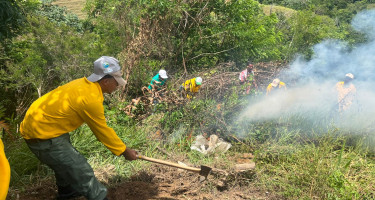Coral Larval Connectivity and Application to Restoration
Understanding how coral babies travel across miles of ocean

Corals have evolved an amazing reproductive technique to synch up spawning events once a year on the full moon. All in the hopes that the gamete bundles released will find a match to become coral larvae that will be carried away by ocean currents to settle in a new home on the reef. Understanding how coral larvae are dispersed across coral reefs is critical to help maximize restoration efforts, because currents can distribute larvae to far distances increasing genetic diversity and providing a source of new coral to recruit to reefs across the region. Larval connectivity is especially important as the massive bleaching events in 2023 and 2024 significantly reduced live coral cover, and restoration can help accelerate recovery of adult corals needed to maintain healthy populations across numerous species.

Simulation of coral larvae dispersal over time originating from the CoralCarib restoration area in Baradéres-Cayemites, Haiti. © The Nature Conservancy
A larval connectivity model was completed for 53 reefs in the CoralCarib countries: Haiti, Jamaica, Cuba, and the Dominican Republic. These reefs were identified as either where current coral restoration is ongoing, or potential for future restoration planning efforts. This was completed using a hydrodynamic model that simulates currents, wind, and waves to track potential coral larval dispersal from restoration sites at 250 m resolution. Using the restoration sites as a source of coral larvae and TNC’s coral reef extent maps, currents distributed larvae 10s of kms from the restoration site, with potential to benefit over 4000 Ha of reef in the CoralCarib countries.
This demonstrates the potential expanded benefits of restoration as outplanted corals not only improve the site but as they mature and reproduce, they will also contribute to enhancing distant populations. Data from this project will be made available in an online tool that will allow any user to view timelapse of coral larvae dispersal for regions in the model. This can help to assist in planning conservation actions and understand which areas to prioritize for restoration.
- Country: Cuba, Haití, Jamaica, Dominican Republic
- Project:
- Contact:
Maxene Atis


